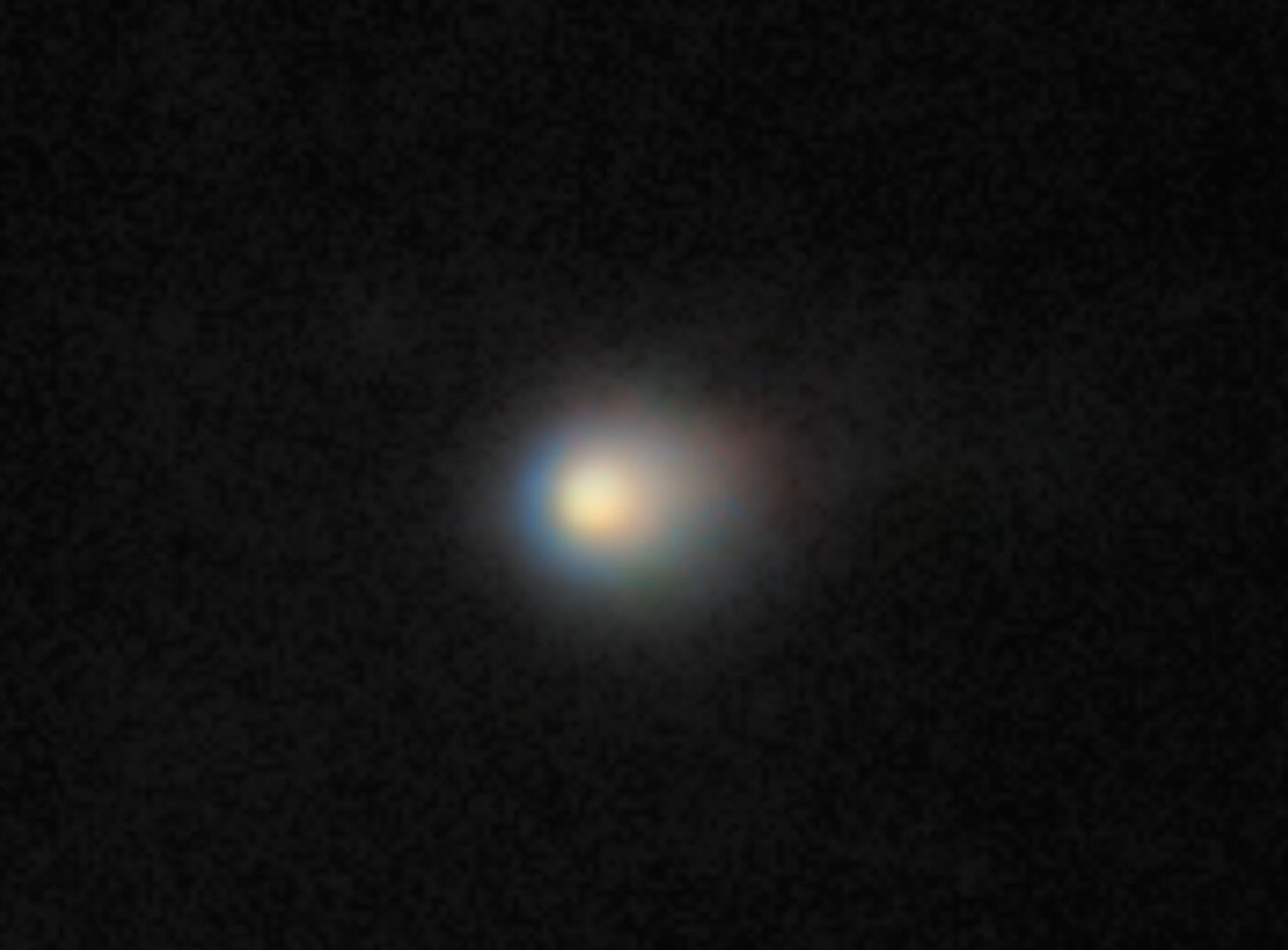by dr. Ana Caramete, PhD

Interstellar Comet 3I/ATLAS captured by the Gemini North telescope, funded by the NSF. The image shows the comet’s compact coma, a cloud of gas and dust surrounding its icy nucleus
For only the third time in the history of modern astronomy, a celestial object originating from outside our solar system has been observed. The newly identified object, officially designated 3I/ATLAS, was discovered on July 1, 2025, by the Asteroid Terrestrial-impact Last Alert System (ATLAS) telescope network. It was recorded traveling towards the Sun at a velocity exceeding 210,000 km/h. Its trajectory is highly hyperbolic (open), indicating that it is not gravitationally bound to the Sun. This orbital characteristic confirms that the object is of interstellar origin. Prior to this discovery, only two interstellar visitors had been confirmed: the object 1I/2017 U1 (‘Oumuamua) in 2017 and 2I/Borisov in 2019. However, many others may have passed through the solar system undetected. With an estimated diameter of approximately 11 km, 3I/ATLAS is by far the largest interstellar object ever observed.
The first known interstellar traveller, ‘Oumuamua, posed a significant mystery. Discovered in October 2017 as a faint point of light (after it had already passed perihelion) it proved difficult to characterize. It was relatively small (a few hundred meters across) and did not exhibit a typical cometary tail or detectable gas emissions. Nonetheless, it displayed non-gravitational acceleration, suggesting that it was being pushed by an unknown force. Because it was only detected during its outbound trajectory, limited observational data were available, leading to exotic hypotheses about its nature, including speculation that it might be an extra-terrestrial probe or spacecraft. While this idea remains highly controversial, the scientific consensus is that ‘Oumuamua was most likely a peculiar natural object, possibly a thin, icy fragment undergoing unusual mass loss or a low-activity comet with undetectable outgassing.
In contrast, the second interstellar object, 2I/Borisov, observed in 2019, exhibited behaviour and morphology consistent with that of a typical comet. Shortly after being discovered by amateur astronomer Gennady Borisov from Crimea, the object was observed with a distinct coma and tail, similar to comets from our own solar system. The solid nucleus was estimated to be about 1 km in diameter and was surrounded by gas and dust, confirming its cometary nature. 2I/Borisov provided the first robust evidence that not all interstellar objects are anomalous, some being just ordinary bodies, likely ejected from other stellar systems.
The third interstellar visitor, comet 3I/ATLAS, is significantly larger and faster, with a glacial nucleus of approximately 11 km in diameter and a current speed of 245,000 km/h, making it the fastest object ever detected in our solar system. Unlike ‘Oumuamua, 3I/ATLAS was detected during its inbound trajectory toward the inner solar system, allowing astronomers a longer observational window. Within days of discovery, multiple observatories reported the presence of a growing coma and a short tail, confirming that 3I/ATLAS is an active comet. Consequently, it was also designated C/2025 N1, in accordance with standard cometary nomenclature.
Each time an interstellar object is identified, a recurring question arises: could it be artificial? Specifically, could such an object be a spacecraft or artifact created by an extra-terrestrial civilization? In the case of ‘Oumuamua, its unusual properties prompted some scientists to hypothesize about a potential artificial origin. Although 3I/ATLAS exhibits far more familiar features, it has nonetheless inspired similar speculation. Arguments include its unusual brightness for an object of its size and its atypical trajectory. These anomalies led Harvard astrophysicist Avi Loeb and colleagues to suggest, in a recent publication, that 3I/ATLAS might represent an extra-terrestrial probe. However, it is critical to emphasize that such ideas are highly speculative, and there is no direct evidence that 3I/ATLAS (or any other interstellar object) is of artificial origin. In fact, spectral analyses of 3I/ATLAS have shown emissions of dust and water vapor consistent with natural cometary activity, strongly supporting a natural origin. The probability that an interstellar object is an alien construct is extremely low, yet scientists continue to monitor 3I/ATLAS for any unusual signals or deviations from its predicted path, such as unexplained radio emissions or anomalous manoeuvres, to comprehensively explore all possibilities.
Ultimately, the scientific significance of comet 3I/ATLAS, and of interstellar objects in general, lies in what they can teach us. These bodies are literally fragments of other star systems, offering a rare opportunity to study extrastellar material without leaving Earth. 3I/ATLAS, for instance, may be billions of years older than Earth, possibly making it the oldest comet ever observed. It could contain primordial material from the early history of a distant stellar system. By analyzing the chemical composition of the gas and dust released (using telescopes such as the Hubble Space Telescope and the James Webb Space Telescope), scientists can compare these data with those from native solar system comets. Such comparisons yield valuable insights into planetary formation, cometary evolution, and the potential universality of the building blocks of life.
The study of interstellar objects is still in its infancy. However, the likelihood of detecting more such visitors is expected to increase significantly with the deployment of next-generation sky survey projects, such as the Vera C. Rubin Observatory, which is anticipated to discover dozens of interstellar objects in the coming decade. Consequently, a larger statistical sample will enable astronomers to better understand the diversity and origin of these cosmic nomads. Discussions are even underway regarding intercept missions. The European Space Agency (ESA) is planning to launch a mission named Comet Interceptor in 2029, which will remain in standby orbit awaiting a suitable target (potentially even an interstellar comet) for close-range study. Each newly discovered interstellar object represents a unique opportunity to learn more about planet formation, the chemical diversity of stellar systems, or, most speculatively, evidence of alien technologies.
References:
• https://science.nasa.gov/solar-system/comets/oumuamua/
• https://science.nasa.gov/solar-system/comets/2i-borisov/
• https://www.space.com/interstellar-comet-first-color-photo.html
• https://arxiv.org/pdf/2507.12213
https://www.esa.int/Science_Exploration/Space_Science/Comet_Interceptor